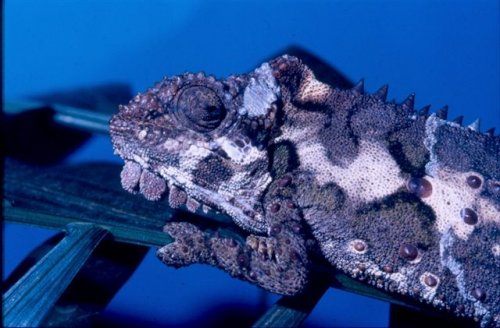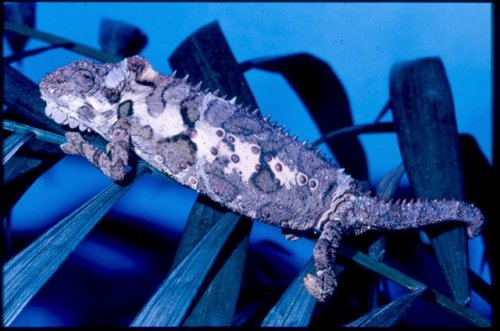Navigation
Install the app
How to install the app on iOS
Follow along with the video below to see how to install our site as a web app on your home screen.
Note: This feature may not be available in some browsers.
More options
You are using an out of date browser. It may not display this or other websites correctly.
You should upgrade or use an alternative browser.
You should upgrade or use an alternative browser.
Identify this!
- Thread starter SouthAfrican
- Start date
Chris Anderson
Dr. House of Chameleons
Do you remember where the animal in the photo was from specifically? It looks like an Eastern Cape Dwarf Chameleon (Bradypodion ventrale) but could be a Western Dwarf Chameleon (Bradypodion occidentale). Bd. ventrale is found in Eastern Cape Province and the eastern portion of Western Cape Province but has also been introduced to places in Free State and Gauteng Provinces. Bd. occidentale is found on the western coast of Western Cape and Northern Cape Provinces.
Chris
Chris
SouthAfrican
New Member
These were found in a small population in Florida (suburb of Johannesburg). I only found them in Pine Trees. This particular female had 33 young in my care.
SouthAfrican
New Member
A few more for you Chris. Male and Female: Found in Westdene ( Suburb of Johannesburg. These were found in 2 neighbouring gardens. And only those 2 gardens. Different locality to the animal in first post. These are Bradypodion ventrale. They look different to the first animal.
Attachments
Chris Anderson
Dr. House of Chameleons
Yeah, they all look like Bd. ventrale to me, just variation within the species.
Chris
Chris
eisentrauti
Avid Member
Great that you joined the forum. I think 33 juveniles is a Bradypodion record !
SouthAfrican
New Member
I found it strange that the first population preferred pine trees over indigenous trees. Apparantly a gentleman by the name of Dougie Miller, introduced a female to another area. One gravid female caused a whole population of Bradypodion ventrale. It was also interesting that these chameleons showed no ill effects contributed by inbreeding. Pardon if my english grammar is not a hundred percent sometimes. They also seemed to only occur up to about 3 metres off the ground and in dense schrub like habitats.
eisentrauti
Avid Member
Our CB populations here in Europe are established by few specimens, they don't have any problems with inbreeding too.
Do the chameleons still live in the area where you introduced them ?
Do the chameleons still live in the area where you introduced them ?
SouthAfrican
New Member
I never introduced them. They have just always been there. While I was growing up I continually discovered these small scattered populations. I have more photos but can't put them all into my first post on this forum. I am not convinced that the first animal is Bradypodion ventrale. I remember that a few well known South African herpetologists were scratching their heads about The taxonomy of these chameleons. I had the male with the red spots in my care for almost ten years.
Nixehface
New Member
These were found in a small population in Florida (suburb of Johannesburg). I only found them in Pine Trees. This particular female had 33 young in my care.
I'm from Florida! How crazy is that lol
Chris Anderson
Dr. House of Chameleons
The Bradypodion genus has started to get quite a bit of attention recently as far as diversity goes. One thing that has been found is that a couple species exhibit an incredible range of morphological variation based on the particular habitat they inhabit. Bd. pumilum, for instance, exhibits at least three extremely different body types, which anyone would easily assume were completely different species, depending on if they are from the fynbos, renosterveld or more typical habitats. It has also been found that although they seem morphological different, "Bradypodion karrooicum" is molecularly indistinguishable from Bradypodion ventrale. There is a good chance that the variation you saw may simply be the result of habitat driven phenotypic plasticity. I've sent an email to a colleague, however, to get their thoughts as well and will let you know.
Chris
Chris
SouthAfrican
New Member
Thanks Chris. Those photos were taken at the Transvaal museum by the ex curator of herpetology Mr Wulf Haacke. I remember it was him who guided me to become a herpetologist. There was also a few occasions where Bill Branch had a look at these chameleons. With the recent reptile survey in South Africa these pictures surfaced again as they would need further exmination to determine their distribution range. I also always used to think that those two species definately shared genetics or are very closely related.
Similar threads
- Replies
- 38
- Views
- 2K
- Replies
- 12
- Views
- 890








